Are you considering venturing into the dynamic world of forex trading but unsure about the initial investment required? You’re not alone. One of the most common questions aspiring traders ask is, “How much do I need to start trading forex?” You can start forex trading with as little as $100, but the recommended minimum is typically $500 to $1,000. Selecting the right online forex broker is crucial to ensure a smooth trading experience.
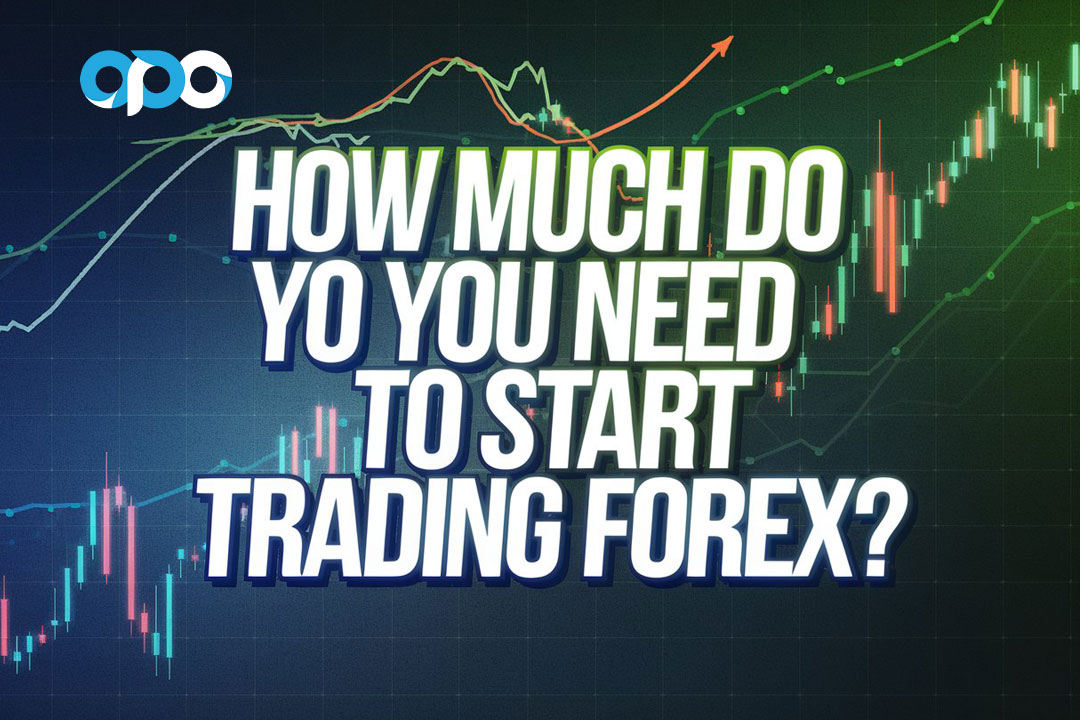
Let’s address the burning questions right away:
- Can you start forex trading with as little as $10 or $25? Technically, yes, some brokers allow micro-accounts with such low deposits. However, this is generally not recommended for serious trading.
- Is $500 enough to trade forex? This amount is often considered a more realistic minimum for beginners, allowing for better risk management and trading flexibility.
- How much can you make with $1000 in forex? Potential earnings vary greatly depending on your skills, strategy, and market conditions. While it’s possible to grow a $1000 account significantly, it’s crucial to have realistic expectations.
In this article, we’ll delve deep into these questions and more, exploring the factors that influence how much capital you need to begin your forex trading journey. We’ll discuss minimum deposit requirements, risk management strategies, the impact of leverage, and the importance of choosing the right forex broker.
Whether you’re a complete novice or have some trading experience, understanding the capital requirements for forex trading is crucial for your long-term success in this exciting financial market. By the end of this article, you’ll have a clear picture of how much you really need to start trading forex effectively and safely.
The Basics of Forex Trading Capital
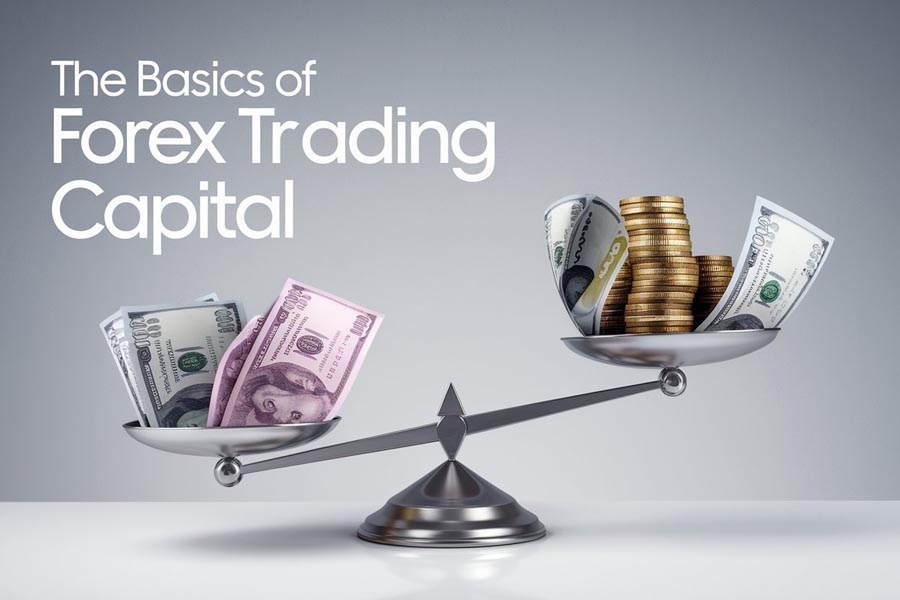
Minimum Deposit Requirements
When you’re just starting out in forex trading, one of the first things you’ll encounter is the concept of minimum deposit requirements. These are the smallest amounts that forex brokers will accept to open a trading account. Let’s break it down:
- Micro-accounts: Some brokers offer micro-accounts with minimum deposits as low as $1 to $100. These accounts are designed for beginners or those wanting to test the waters with minimal risk.
- Standard accounts: These typically require higher minimum deposits, often ranging from $100 to $1000 or more.
- Premium or VIP accounts: For more experienced traders, these accounts may require minimum deposits of $10,000 or more, but often come with additional perks and services.
It’s important to note that while some brokers might allow you to open an account with as little as $10 or $25, this doesn’t necessarily mean it’s a good idea to start trading with such small amounts. Let’s explore why.
Can I Trade Forex with $10 or $25?
Technically, yes, you can find brokers that allow you to open an account and start trading with as little as $10 or $25. However, there are several reasons why this is generally not recommended:
- Limited trading opportunities: With such a small account, you’ll be extremely limited in the positions you can take. Even with high leverage, you may not be able to open trades on many currency pairs.
- High risk of account depletion: A few losing trades could wipe out your entire account. This leaves no room for learning from mistakes, which is crucial for new traders.
- Psychological pressure: Trading with such a small amount can lead to emotional decision-making. You might be tempted to take on excessive risk in an attempt to grow your account quickly.
- Unrealistic expectations: Starting with $10 or $25 and expecting to make significant profits is unrealistic. It can lead to disappointment and potentially harmful trading behaviors.
While it’s possible to start with these amounts, it’s generally advisable to save up more before entering the forex market.
Is $500 Enough to Trade Forex?
A $500 initial deposit is often considered a more realistic minimum for beginners in forex trading. Here’s why:
- Better risk management: With $500, you can better implement the 1-2% risk per trade rule, a fundamental principle of forex risk management.
- More trading opportunities: A larger account balance allows you to trade a wider range of currency pairs and take advantage of more market movements.
- Psychological buffer: $500 provides a bit more cushion against losses, potentially reducing emotional stress and allowing for more rational decision-making.
- Room for learning: With $500, you have more opportunity to learn from your mistakes without immediately depleting your account.
However, even with $500, it’s crucial to manage your expectations and trade cautiously. This amount is still relatively small in the world of forex trading, and growing it will require patience, discipline, and continuous learning.
How Much Can You Make with $1000 in Forex?
The potential earnings from a $1000 forex account can vary dramatically based on several factors:
- Trading strategy: Different strategies carry different risk-reward ratios and potential returns.
- Market conditions: Volatility and trends in the forex market can significantly impact potential profits.
- Risk management: How much you risk per trade will affect both your potential gains and losses.
- Trading frequency: Day traders might see more frequent but smaller gains, while position traders might see fewer but potentially larger gains.
- Trader’s skill and experience: More experienced traders are likely to see better returns than beginners.
It’s important to have realistic expectations. While stories of traders turning $1000 into large sums quickly do exist, they are the exception rather than the rule. A more realistic goal might be to aim for consistent, modest growth. For example, if you could achieve a 10% return per month (which is still quite ambitious), you’d grow your $1000 account to $3138 over the course of a year.
Remember, forex trading carries significant risk, and it’s possible to lose money as well as make it. Focus on consistent, sustainable growth rather than trying to get rich quickly.
Factors Influencing Your Starting Capital
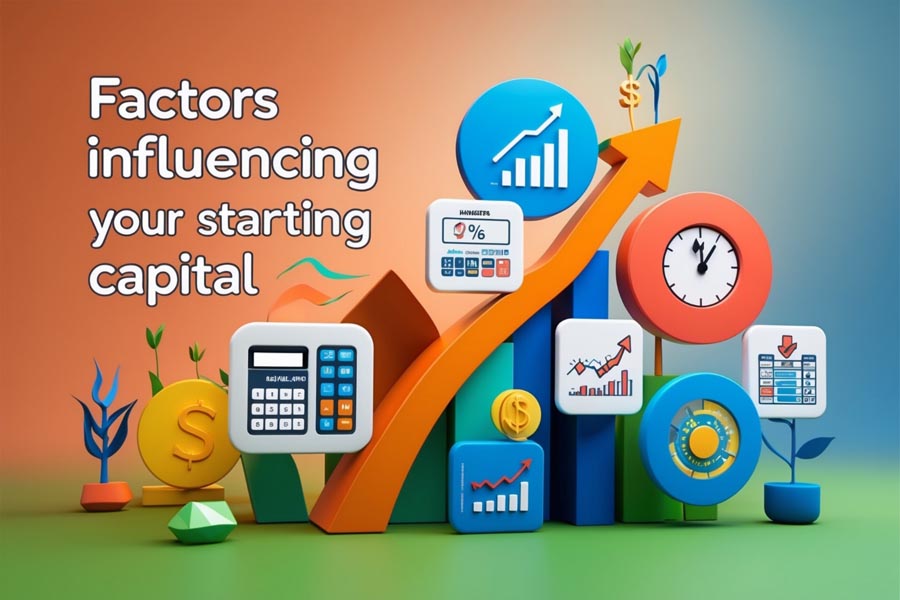
When determining how much capital you need to start forex trading, several key factors come into play:
1. Risk Management
Risk management is arguably the most crucial aspect of successful forex trading. A common rule of thumb is to never risk more than 1-2% of your account balance on a single trade. This means that with a $500 account, you should risk no more than $5-$10 per trade.
Effective risk management is what separates successful traders from those who quickly deplete their accounts. It allows you to withstand a series of losing trades without wiping out your capital.
2. Trading Style
Your preferred trading style significantly impacts the amount of capital you need:
- Scalping: This high-frequency trading style often requires more capital due to the higher number of trades and the impact of spreads and commissions.
- Day Trading: Day traders might need more capital than swing traders to take advantage of intraday price movements effectively.
- Swing Trading: This style can be done with less capital as trades are held for days or weeks, reducing the impact of spreads and allowing for wider stop losses.
- Position Trading: Long-term trades can potentially be managed with less capital, but having more allows for better position sizing and risk management.
3. Leverage
Leverage is a double-edged sword in forex trading. While it allows you to control larger positions with a smaller amount of capital, it also amplifies both profits and losses.
For example, with 100:1 leverage, you could potentially control a $10,000 position with just $100. However, a small move against your position could quickly deplete your account.
While leverage can be useful, it’s crucial to use it judiciously, especially when starting with a smaller account.
4. Market Volatility
Forex markets can be highly volatile, with prices sometimes moving rapidly in response to economic news or geopolitical events. Having a larger capital cushion can help you weather these market fluctuations without being forced out of potentially profitable trades due to short-term price swings.
5. Personal Financial Situation
It’s crucial to only trade with money you can afford to lose. Your trading capital should be separate from your savings for living expenses, emergencies, and long-term financial goals.
How Much Capital Do You Really Need?
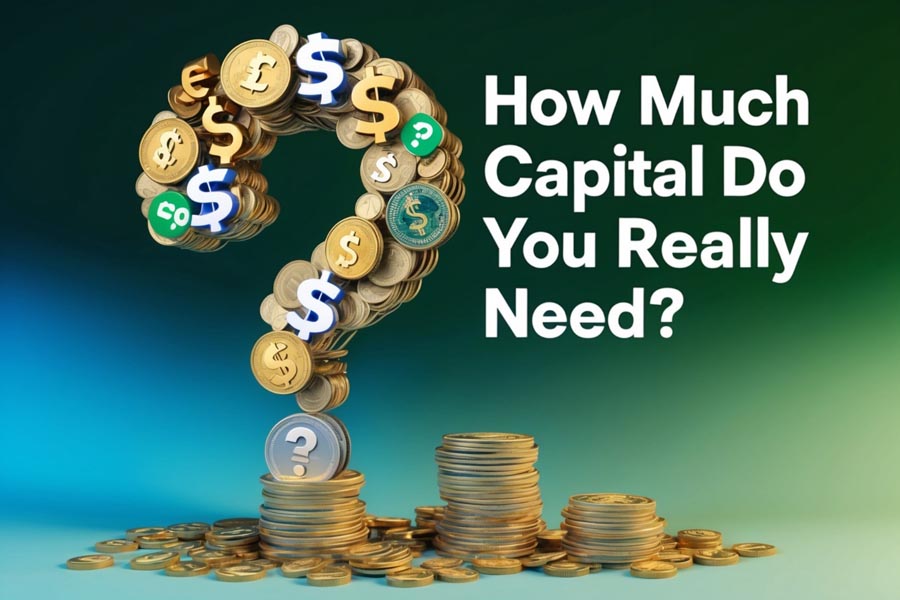
Now that we’ve explored the factors influencing your starting capital, let’s break down different capital levels and what they mean for your trading:
The Bare Minimum: $100-$500
While some brokers allow you to start with as little as $100, this is generally not recommended for serious traders. With such a small account:
- You’ll be limited to micro-lots or even nano-lots.
- Risk management becomes challenging as even 1% of your account is a tiny amount.
- A string of losses could quickly deplete your account.
- The psychological pressure of trying to grow a small account can lead to poor decision-making.
The Recommended Minimum: $500-$1000
Most experienced traders and financial experts suggest starting with at least $500 to $1000. This amount allows for:
- Better risk management practices
- More flexibility in trading strategies
- A psychological buffer against losses
- The ability to weather a series of losing trades without wiping out your account
With $1000, you can risk $10-$20 per trade (adhering to the 1-2% rule), giving you more room to set appropriate stop losses and take profits.
The Ideal Starting Capital: $5000-$10000
For those serious about forex trading as a potential income source, starting with $5000 to $10000 is ideal. This amount provides:
- Ample room for risk management
- The ability to take advantage of more trading opportunities
- A realistic chance of generating meaningful profits
- The possibility of weathering extended drawdown periods
With this amount, you can potentially start seeing returns that could supplement your income, although it’s important to remember that profits are never guaranteed in forex trading.
Professional Level: $25000 and above
Professional forex traders often work with account sizes of $25000 or more. At this level:
- You can implement more sophisticated trading strategies
- There’s potential for full-time income (though this requires exceptional skill and is not common)
- You can better capitalize on larger market moves
- Risk management becomes more flexible, allowing for more diverse trading approaches
Remember, regardless of your account size, proper risk management and continuous education are key to long-term success in forex trading.
Read more: Do You Need $25000 to Day Trade Forex?
Strategies for Success with Limited Capital
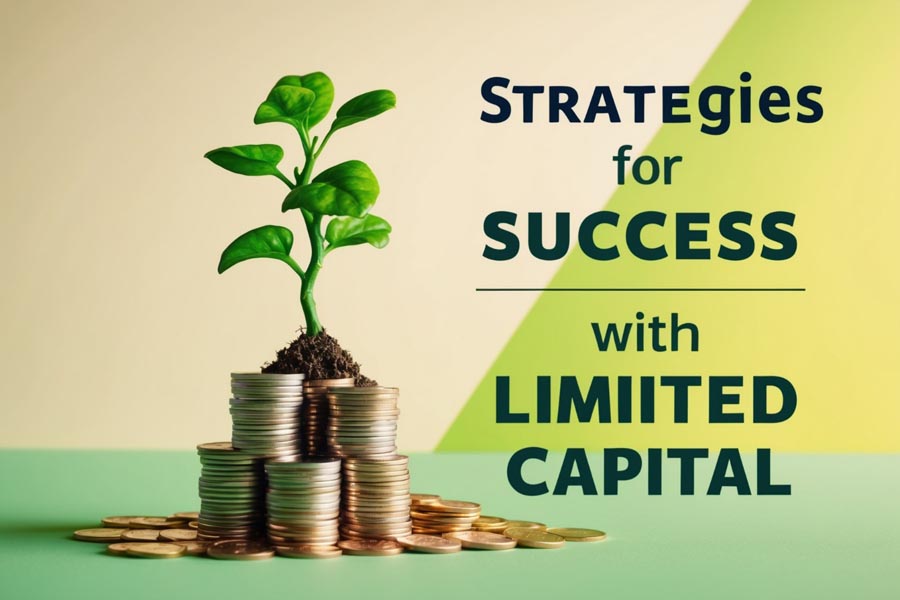
If you’re starting with a smaller amount of capital, there are strategies you can employ to maximize your chances of success:
Micro and Nano Lots
Many brokers offer micro (0.01 lot) or even nano (0.001 lot) lot sizes. These allow you to trade with smaller amounts of capital while still practicing proper risk management. For example, with nano lots, you could potentially risk just a few cents per pip movement.
Demo Accounts
Before risking real money, use a demo account to practice your strategies and get a feel for the market without financial risk. Most reputable brokers offer demo accounts that simulate real market conditions.
Education and Skill Development
Invest in your knowledge before investing large sums in the market. Understanding forex fundamentals, technical analysis, and risk management is crucial for long-term success. There are numerous free resources available online, including:
- Educational articles and videos from reputable forex websites
- Webinars hosted by experienced traders
- Free courses offered by some brokers
Consistent Growth Strategy
Start small and focus on consistent percentage gains rather than trying to make large profits quickly. This approach can help you grow your account steadily over time. For example, aiming for 1-2% account growth per week is more sustainable than trying to double your account in a month.
Risk Management Tools
Utilize risk management tools provided by your broker, such as:
- Stop-loss orders to limit potential losses
- Take-profit orders to secure gains
- Trailing stops to protect profits as the market moves in your favor
These tools can help you manage risk effectively, even with a smaller account.
OpoFinance Services: Your Trusted ASIC-Regulated Forex Broker
When it comes to choosing a reliable forex broker, OpoFinance stands out as an excellent choice. As an ASIC-regulated broker, OpoFinance offers a secure and transparent trading environment for forex traders of all levels. Their commitment to regulatory compliance ensures that your funds are protected and your trading experience is fair and reliable.

One of OpoFinance’s standout features is their innovative social trading service. This platform allows new traders to learn from and copy the trades of experienced investors, potentially accelerating their learning curve and improving their chances of success. Whether you’re starting with a small account or have substantial capital to invest, OpoFinance provides the tools and support you need to navigate the forex markets effectively.
Conclusion
Starting your forex trading journey doesn’t require a fortune, but it does demand careful consideration of your financial situation and trading goals. While you can technically start with as little as $100, a more realistic minimum is $500 to $1000. The key to success in forex trading lies not just in the amount of capital you start with, but in your knowledge, risk management skills, and choice of a reputable broker.
Remember, forex trading carries significant risk, and it’s essential to educate yourself thoroughly before committing real capital. Start with a demo account, practice your strategies, and gradually increase your investment as you gain experience and confidence. With patience, discipline, and the right approach, you can build a successful forex trading career regardless of your starting capital.
Can I start forex trading with $50?
While some brokers may allow you to open an account with as little as $50, it’s generally not recommended. Such a small account balance severely limits your trading options and makes it extremely difficult to implement proper risk management. It’s better to save up at least $500 before starting to trade live.
How long does it take to become profitable in forex trading?
The time it takes to become consistently profitable in forex trading varies greatly depending on factors such as your dedication to learning, market conditions, and your ability to manage emotions. Many successful traders report that it took them 1-2 years of consistent practice and learning before they became profitable. Remember, forex trading is a skill that requires time and effort to master.
Is it better to start with a large account or gradually increase my investment?
For most beginners, it’s advisable to start with a smaller account and gradually increase your investment as you gain experience and develop a consistent trading strategy. This approach allows you to learn from your mistakes without risking large amounts of capital. As you become more proficient and confident in your trading abilities, you can consider increasing your account size to potentially generate more significant returns.








One Response
Perfectly pent articles, Really enjoyed looking through.